What is the environment?

The environment is the world, including plants and animals, that surrounds us and the conditions we live in. Humans can have an impact on their environment by how they live and what they do.

Watch: Learn about the environment
Find out more about climate change and recycling.
All that plastic and packaging you get with groceries and deliveries. All the cardboard from those takeaway pizzas. All those metal tins and cans. We create a lot of waste. But luckily there are different ways to reuse those materials.
Hi, my name's Jude. Every time you throw something away, it ends up somewhere. That can have a bad impact on the environment. Lots of waste goes to landfill, where it just sits being… well, rubbish!
But at places like this recycling centre behind me, some waste can be turned back into raw materials and reused. That’s called recycling. Let’s investigate…
Either people paid by the government, or the public themselves, can bring waste here and it’s sorted in different areas - depending on what type of material it is.
Here they can recycle: garden waste, wood, bricks, carpets, cardboard, paper, various electrical items, types of metal like food tins and aluminium, and of course, plastic.
All that waste is then transferred inside, where it’s carefully sorted. It’s then taken to a recycling facility and put into recycling machines. They can turn the waste back into a material we can use.
Those are all recyclable materials, but some people think that not enough material is being made to be re-used.
Lots of plastic, like the bags at the supermarket, are only made to be used once and they take a thousand years to eventually break down into nothing! Until then they just sit around and harm the environment.
When people say ‘environment’, it describes not only the area just around us, but the world as a whole. It’s dangerous for animals if they swallow or get stuck in plastic, and plastic releases pollution into the water as it dissolves, and into the air if it’s burnt.
I’m back home now from the recycling centre. We have different bins at home to help sort between recyclable and non-recyclable materials. Your local council gives information to explain what those different materials are.
But with humans creating so much harmful waste, the public can’t tackle this crisis alone: we need our leaders to make laws so companies use recyclable material only.
The gas, oil and coal industries create plastic and all sorts of other things we need, like energy. But they have a negative impact on the environment.
Over time, the waste they create and chemicals they release heat up the planet, making our weather more unpredictable and more dangerous.
What can you do to reduce your impact on the environment?
Pollution
Pollution is when harmful substances are released into the environment.
These substances damage or harm living organismPlants, animals and humans and change the planet.
Pollution can happen:
Naturally, such as result of a volcanic eruption or a tsunami.
As a result of human activity.
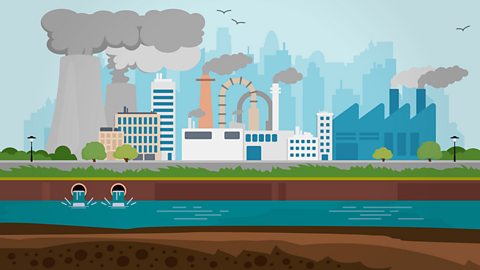
Human activity has harmed the Earth in many ways:
Air pollution
When harmful gases, chemicals and particles enter the air, the air becomes polluted. Air pollution can be caused byfactories, cars, chemicals, fumes from spray cans and gas called methane, which is released from landfills where rubbish is buried.
Air pollution is mainly caused by the burning of fossil fuels, such as coal, natural gas, and oil. Because of the large number of vehicles using fossil fuels in the world today, the levels of carbon emissionThe amount of carbon being released into the atmosphere. in the atmosphere are too high. That causes the surface temperature of the Earth to rise. This is called global warming.
Soil pollution
Soil pollution can be caused by the waste produced by factories and industries, acid rain and household waste.
Water pollution
Often dangerous chemicals are used to protect crops from pests. These chemicals can enter streams and affect large areas. Pollution of rivers, lakes, seas and oceans has a major impact on wildlife. Oil spills are one of the greatest causes of water pollution.
Sustainability
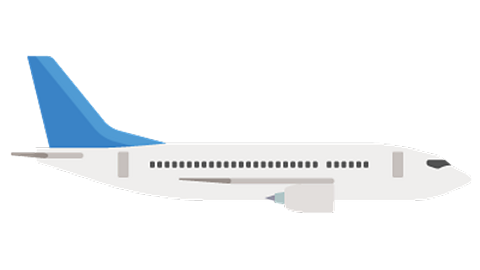
The population of the Earth is increasing, which means that demand for goods, food, travel and industries is also rising.
To survive, humans must interact with the Earth in a way that would make sure there will be enough resources for future.
This is called sustainability.

Impacts of climate change
Global warming has a major impact on our planet; the Earth’s climateThe long-term weather patterns in an area. is changing.
- Sea ice and glaciers are melting, which leads to rising sea levels.
- Extreme weather events such as hurricanes are happening more often.
- Many animal and plant species are in danger of losing their habitatThe natural home of a plant or an animal..
- Farming can be affected by drier and warmer conditions, which could lead to food shortages.
- Some rivers, which depend on snow supplies, could be affected and experience water shortages, as well as places that depend on water supplies from glaciers.
Some of these changes are already happening; others could happen in the future if carbon emissionThe amount of carbon being released into the atmosphere. are not reduced and the changing of the climate is not slowed down.

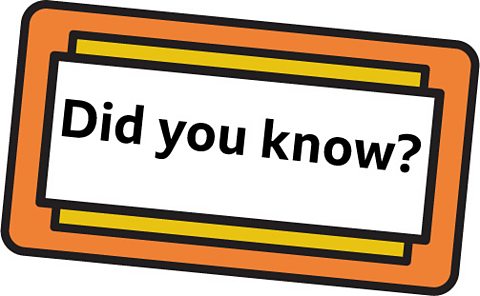
Not all emissions can be reduced to zero; so instead, people are trying to find ways of removing the harmful gases from the atmosphere.
Planting trees is one of them, because they can absorb carbon dioxide.
Ways of helping
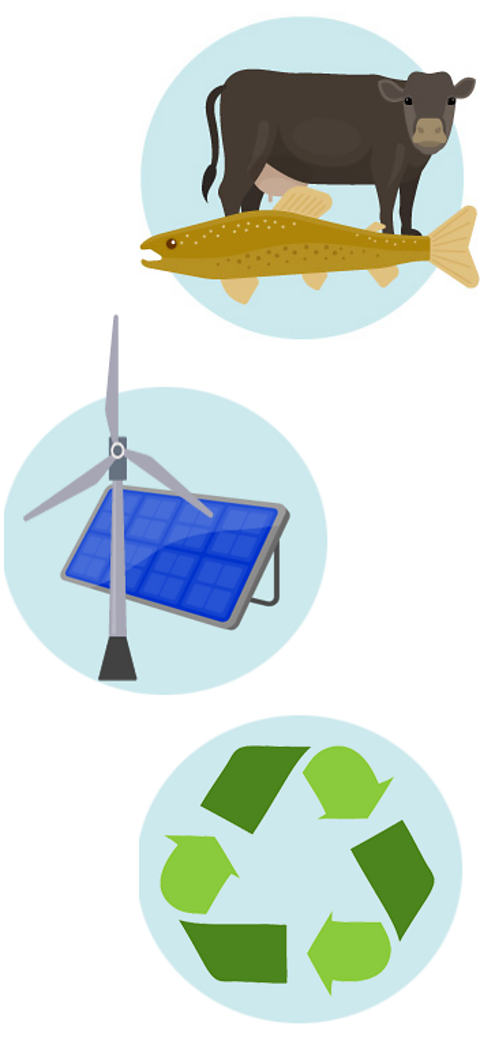
The UK government has set itself a target to reach almost no emissions of gases that cause the greenhouse effect by 2050.
Humans are trying to reduce carbon emissions in different ways:
using more renewable energy sourcesSources of energy that can be replaced such as solar energy, water power, wind power. to make electricity
using electric cars or hybrid cars, which release less harmful gases
recycling and using recycled materials to make products
consuming local produce to avoid the need for transportation of goods
avoiding waste
avoiding the use of plastic
reducing how much beef they eat as cows produce another greenhouse gas called methane.

Recycling

Waste is things and products that are thrown away because they are unusable or people don’t want them anymore.
There are different types of waste:
- Food waste
- Clothing waste
- Electronic waste such as TVs, mobile phones, laptops, fridges
- Paper waste
- Plastic
- Metal
- Glass

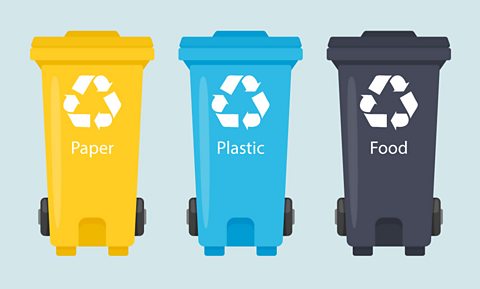
One of the ways to reduce carbon emissions is to reduce waste, for example by using reusable products rather than single-use items, such as plastic cutlery or disposable nappies.
Another way of reducing waste is to recycle. When a part of, or the whole of a used product is used for something else, it is called recycling.
Recycling plays a large part in protecting our environment.
Different types of waste can be recycled in different ways:


Image caption, Glass
Glass and metal are broken into small pieces, which can be melted and made into new things.
Image caption, Paper
Paper can be turned into card or newspapers.
Image caption, Plastic
Some plastic can be broken into pieces, which are then melted and turned into something new.
1 of 3
Activities
Quiz: Environment
Fill the gap: Global warming
Game - Climate Detectives
THE REGENERATORS

Bitesize Primary games. gameBitesize Primary games
Play fun and educational primary games in science, maths, English, history, geography, art, computing and modern languages.

More on Geography of the UK
Find out more by working through a topic
- count1 of 17
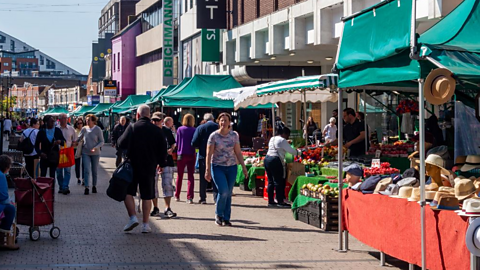
- count2 of 17

- count3 of 17
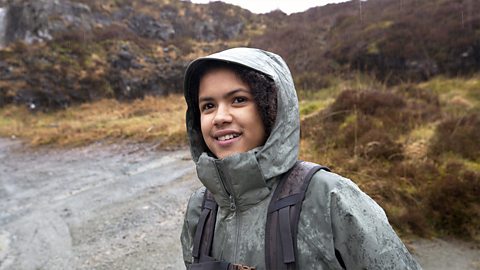
- count4 of 17
